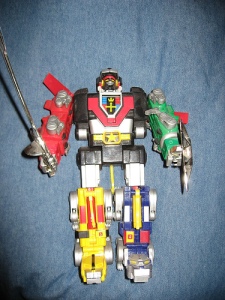By now I’m sure you’ve all heard the tale of two weddings in Philadelphia and the ensuing brawl and tragic death of the uncle of one of the brides. In fact, I’m sure you’ve more than heard of it – likely you’ve seen the video, over and over again. I know I did.
Or perhaps you’ve been more focused on the fans at the Kansas City Chiefs football game, who cheered when quarterback Matt Cassell left a 9-6 loss to the Baltimore Ravens with a concussion. There’s so much news out there it is hard to choose how to spend one’s time.
Last night I watched a cable news channel in hopes that the resident analysts would direct me to the most important stories. I happened to tune in to the middle of a report about a man who had left a teaspoon full of cereal in the cereal box, and put the box back in the cabinet, not considering the fact that he was taking up valuable cabinet space with an amount of cereal that would satisfy not even the smallest mouth. The show had lined up a panel of experts to discuss the event.
“This is further evidence of the fragmentation of the American family,” one expert said, head neatly fitting in to the box allotted to it on the screen.
“Well, I think the problem is that the husband just assumes his wife is going to take care of it,” said a second. “Clearly the kitchen is still seen as a woman’s domain. We have a long way to go.”
“I take offense to that statement,” said the third expert, a little taller than the others, and who kept ducking to stay within the confines of the box. “This isn’t about gender wars. This isn’t about family, either. This is a conspiracy by bowl-manufacturers in making us think that a teaspoon of cereal is not a serving.”
The fourth box on the screen was reserved for the host, who said to the camera, “What do you think about this guy leaving a teaspoon of cereal in the cabinet? Email us your comment to the address at the bottom of your screen. We want to hear from you.”
I changed the channel to another cable news program. This time the event was a birthday party gone awry. The parents of the little birthday boy had served soft drinks as refreshments, and several of the guests had been raised in homes where the only available beverages were water and freshly squeezed guava juice. One of the kids had filmed the entire thing with his cell phone, and now millions of viewers were treated to a grainy video of children being served soda.
This show had adopted the round table format for its experts. The nutritionist called this behavior “appalling.” The child social worker also said it was “disturbing.” The famous tort litigator – plugging his new book, “Holding Party-Throwers Accountable” – eagerly set forth several theories of liability.
“The key question,” the attorney said, “is whether the parents will be seen as acting with malice in serving the soft drinks, and not merely negligence. If its malice, it will mean big dollars. If negligence, just dollars.” The host of the round table ran the video clip again, and all agreed – myself included – that the parents’ faces were malicious as they poured cola into little plastic cups for little hands. Disgusted, I turned to yet another cable news channel.
At first I did not know what I was watching. It was another video, this one of a man, sitting on a couch, holding a remote control, and starting straight ahead at something, likely a television. He looked vaguely familiar. He had the same pullover fleece and flannel pajama pants that I was wearing at that exact moment. And even the couch on which he sat his slovenly mass looked just like my couch. Perhaps he had been my classmate in high school.
The analysts were breaking down this man’s body language and discussing the ongoing epidemic of people not getting enough exercise. One of the experts started to say that with all the cable news programs available these days, showing clip after clip of ordinary people who do not know they are being filmed, it was no wonder that they can’t pry themselves away from the screen. Then a large monster emerged from the left side of the screen, devoured the expert in one bite, and the network went to a commercial.
I changed the channel to find another cable news program. They’re always going on about how people don’t get enough exercise.

